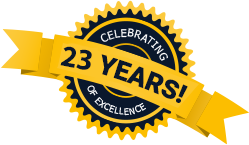Moving Service to the Fast Lane
Auto Rental News January / February 2005
Today, everything about your fleet is costing more. CAP cost, interest, insurance, it all seems to be on the rise which is causing owners and management to spend more time than ever trying to rein in the cost of your fleet. If you’ve read our past articles you know that we constantly preach balance in our industry. That is, the company that does ‘pretty well’ in all areas of the business is destined to be successful. So, while you’re dedicating more resources on fleet planning and controlling costs, a daily and weekly plan still needs to be executed on how your company will continue to grow the top line.
In my previous article, I stated my case for taking an active role in recruiting, developing, inspiring and, yes, even firing your employees. Rental is a team sport.Without a team of involved and educated employees, success will elude you. This issue’s article focuses on process and numbers. Sounds dry, but it’s really not. And, if you don’t handle these well, you might join the ranks of former rental car company owners and managers. There are a lot of them out there.
Some time ago, when I was actively involved every day in hiring new employees, I would regularly sit in on interviews conducted by our managers. I heard this claim over and over: “The car rental business is an exciting career choice. Your workdays are unique. Every rental transaction is different.”
Managers would then go on to describe this mythical “every day is a fun adventure” type of work environment.Well, that sounded good at the time. But as I reflected on this, I realized it wasn’t true. And when we convinced our new hires that each rental transaction they faced was unique, we took away their willingness to systemize their day.
Without systemization and attention to process, we piled on the expectation of complexity. This approach created built-in excuses for slow service. Even worse, it tainted our training process, which ultimately allowed inefficiencies to fester. After all, if what we did was so unique and customized, how could we possibly be expected to get the customers in and out quickly?
In a perverse way, we were trying to convince ourselves that the car rental business was more complicated than it is, lending some aura of mystery to it. But in the process of doing so, we talked ourselves out of looking for opportunities to take complexity out of our day.
So, who cares? Well, customers who cool their heels and spend too much time at your counter or waiting area care — that’s who!
Look Upstream
Have you ever really measured how long it takes a customer to transact business with you? I’m not speaking just about the time it takes standing at the counter, but the cumulative time spent finding you, making a reservation, coming to your place of business, getting written up, responding to your inquiries about the date of return (or other callback issues), returning the car, paying and leaving.
I’ve had rental customers tell me what they really want in a rental — good value, a clean car and fast service. They are pretty blunt about it when you ask them. I maintain that the car rental industry has over-complicated the business. By doing so, the industry has become out of kilter with the desires of our customers. Inattention to process has played a major role in getting us to where we are today.
So, what do you do? Identify and break down each process involved in getting a customer out the door. Look at your advertising, including your Web site. Are there too many words in your offer? Is your Web site hard to navigate and confusing? Can the prospect back up and correct mistakes? I’m amazed by some of the major car rental companies’ Web sites. It’s as though they’re trying to get people to abandon the site.
Think about how you answer your phone. Have you boiled your “talk path” down to get the customer to “yes” as fast as possible, while getting all the information needed to secure the reservation and avoid a no-show?
(I’ve seen one major company reservation process that doesn’t ask for a customer phone number, leading to no-show rates in excess of 50%. Reservation fees are still charged, but the local operation has no opportunity to confirm the reservation.)
Think about your in-and-out process. Are you built for speed? Are there roadblocks that you’ve either allowed, or worse, created yourself? Have you “saved money” by passing three gas stations nearby to get to the station two miles down the road to save three pennies per gallon? Do you buy household roll-around vacuums that break every eight weeks to “save money” over a commercial vacuum? Once you get on this process kick, and learn how to identify and then overcome these time-killers, you’ll be happy with how much time you take out of your processes.
Once you start this, you can become a bit obsessive. You can find potential for improvement all over the place. Even little successes add up.
With the right company culture and employee training program in place, your employees will respond to your leadership and grasp how to identify the needs of your customers. Lead ’em to water, and the smart ones will drink.
What’s the payback for doing this well? When you pare down the time it takes for employees to perform their basic jobs, they have more time for other tasks. These projects might include training, sales calls and long-term planning for your business. Don’t stop them by allowing roadblocks.
Next Stop: Numbers
Once this starts to work its way into the fabric of your company, you’ve got to recognize success. And you don’t do this by guessing, you do it by measuring. You can measure how long it takes your people to take a reservation. You can measure your no-show rate. You can use Web site tools to measure the abandonment rate from your site.
You can observe and see how long it takes a car to be prepped for rental. You can measure how long it takes for your staff to write a contract. You can measure your fleet utility every day, hour and minute, and make it an issue in your company. You can measure the level of undocumented damage, how much it costs your company, and start to expose “false economies.” For example, maybe your agents “save time” by never checking cars in and out properly. This leads to unaccounted for, and unpaid for, damage. Then the car goes into the shop, and it kills your on-rent utility. So, how much time did the agent save by not looking at the car as it went out and came back?
Recognizing success starts with recognizing a starting place. If today it takes four minutes to take a reservation, moving to 3.5 minutes is good. But what if, at the same time, your staff starts skimping on information gathering, and the amount of time spent at the counter moves from six minutes to 7.5 because the reservation-taker skips some needed steps? Then you’ve gained false economy.
Remember, the car rental business is a process and not a project. Each facet of the business is keenly interrelated to others. If you don’t admit this, you’ll forever be chasing the “issue of the day” and not viewing the business as an interrelated system.
Sound complicated? Well, it is. But if you have a company culture that sets high expectations — and you find, orient, train, recognize and reward employees who excel in all areas of the business — it gets a lot easier.
In my previous article, I observed that many owners and managers stand accused of doing all the thinking in their company. I contend that if you follow the formula we espouse, your job gets easier — not harder. It takes hard work to get there, but once there you benefit from the fact that many hands make hard work easier.
Don’t forget that car rental is a team sport.




